Editorial board
Editors of this journal work on a purely voluntary basis without remuneration in line with the not-for-profit philosophy of the EGU.
Managing editor
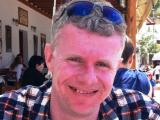
Tom Coulthard
Manchester Metropolitan University
Faculty of Science and Engineering
Faculty of Science and Engineering
United Kingdom

Editors
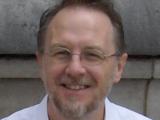
Andreas Baas
King's College London
Geography
Geography
United Kingdom

Niels Hovius
GFZ Helmholtz Centre for Geosciences
Section 4.6
Section 4.6
Germany
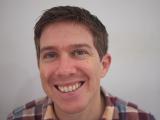
Douglas Jerolmack
University of Pennsylvania
University of Pennsylvania
Department of Earth and Environmental Science
University of Pennsylvania
Department of Earth and Environmental Science
United States

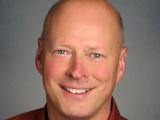
Andreas Lang
Paris Lodron University Salzburg
Department Environment and Biodiversity
Department Environment and Biodiversity
Austria

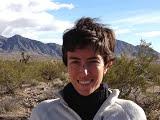
Paola Passalacqua
The University of Texas at Austin
Cockrell School of Engineering
Maseeh Department of Civil, Architectural and Environmental Engineering and Center for Research in Water Resources
Cockrell School of Engineering
Maseeh Department of Civil, Architectural and Environmental Engineering and Center for Research in Water Resources
United States


Wolfgang Schwanghart
University of Potsdam
Institute of Environmental Science and Geography
Institute of Environmental Science and Geography
Germany

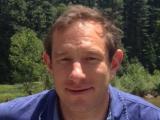
A. Joshua West
University of Southern California
Earth Sciences
Earth Sciences
United States

Associate editors
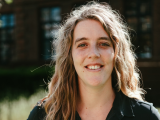
Anne Baar
Delft University of Technology
Faculty of Civil Engineering and Geosciences
Department of Water Management
Faculty of Civil Engineering and Geosciences
Department of Water Management
Netherlands


Andreas Baas
King's College London
Geography
Geography
United Kingdom

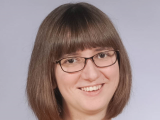
Frances E. G. Butcher
School of Geography and Planning, University of Sheffield
University of Sheffield
School of Geography and Planning
University of Sheffield
School of Geography and Planning
United Kingdom

Fiona Clubb
Durham University
Geography
Geography
United Kingdom
Sagy Cohen
University of Alabama
Geography
Geography
United States
Susan Conway
CNRS UMR6112 LPG
Laboratoire de Planétologie et Géosciences
Laboratoire de Planétologie et Géosciences
France

Tom Coulthard
Manchester Metropolitan University
Faculty of Science and Engineering
Faculty of Science and Engineering
United Kingdom

Kieran Dunne
Delft University of Technology
Faculty of Civil Engineering and Geosciences
Department of Hydraulic Engineering
Faculty of Civil Engineering and Geosciences
Department of Hydraulic Engineering
Netherlands
Orencio Duran Vinent
Texas A&M University
Ocean Engineering
Ocean Engineering
United States
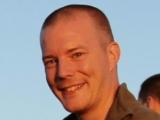
Joris Eekhout
CEBAS-CSIC
Soil and Water Conservation Research Group
Soil and Water Conservation Research Group
Spain

Xuanmei Fan
Chengdu University of Technology
State Key Laboratory of Geohazard Prevention and Geoenivronment Protection (SKLGP)
State Key Laboratory of Geohazard Prevention and Geoenivronment Protection (SKLGP)
China
Valier Galy
Woods Hole Oceanographic Institution
Marine Chemistry and Geochemistry
Marine Chemistry and Geochemistry
United States
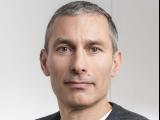
Richard Gloaguen
Helmholtz Institute Freiberg for Resource Technology
Exploration
Exploration
Germany

Yves Godderis
CNRS
Geosciences-Environment Toulouse
Geosciences-Environment Toulouse
France
Greg Hancock
The University of Newcastle
Australia
Kimberly Hill
University of Minnesota
Civil Engineering, St. Anthony Falls Laboratory
Civil Engineering, St. Anthony Falls Laboratory
United States
Robert Hilton
University of Oxford
Earth Sciences
Earth Sciences
United Kingdom
Niels Hovius
GFZ Helmholtz Centre for Geosciences
Section 4.6
Section 4.6
Germany

Douglas Jerolmack
University of Pennsylvania
University of Pennsylvania
Department of Earth and Environmental Science
University of Pennsylvania
Department of Earth and Environmental Science
United States

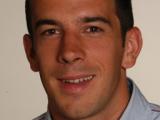
Michael Krautblatter
Technical University of Munich
Landslide Research
Landslide Research
Germany


Andreas Lang
Paris Lodron University Salzburg
Department Environment and Biodiversity
Department Environment and Biodiversity
Austria

Francois Metivier
University Paris Cité
Institut de Physique du Globe de Paris
Dynamique des Fluides Géologiques
Institut de Physique du Globe de Paris
Dynamique des Fluides Géologiques
France
Simon Mudd
University of Edinburgh
GeoSciences
GeoSciences
United Kingdom
Daniel Parsons
Loughborough University
VC Office & Geography and Environment
VC Office & Geography and Environment
United Kingdom

Paola Passalacqua
The University of Texas at Austin
Cockrell School of Engineering
Maseeh Department of Civil, Architectural and Environmental Engineering and Center for Research in Water Resources
Cockrell School of Engineering
Maseeh Department of Civil, Architectural and Environmental Engineering and Center for Research in Water Resources
United States


Anastasia Piliouras
Pennsylvania State University
Department of Geosciences
Department of Geosciences
United States

Daniella Rempe
The University of Texas at Austin
Jackson School of Geosciences
Department of Earth and Planetary Sciences
Jackson School of Geosciences
Department of Earth and Planetary Sciences
United States
Cornelia Rumpel
CNRS
Institute of Ecology and Environment Paris
Institute of Ecology and Environment Paris
France
Dirk Scherler
GFZ Helmholtz Centre for Geosciences
Germany

Wolfgang Schwanghart
University of Potsdam
Institute of Environmental Science and Geography
Institute of Environmental Science and Geography
Germany

Giulia Sofia
University of Connecticut
Civil and environmental engineering
Civil and environmental engineering
United States

Arjen Stroeven
Stockholm University
Department of Physical Geography
Department of Physical Geography
Sweden

Edward Tipper
University of Cambridge
Dept. Earth Sciences
Dept. Earth Sciences
United Kingdom
Veerle Vanacker
Université catholique de Louvain
Belgium

A. Joshua West
University of Southern California
Earth Sciences
Earth Sciences
United States

Editors on leave
Jean Braun
GFZ
Earth Surface Process Modeling
Earth Surface Process Modeling
Germany
Rebecca Hodge
Durham University
Geography
Geography
United Kingdom

